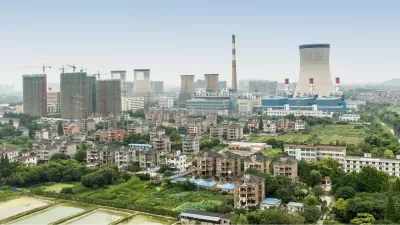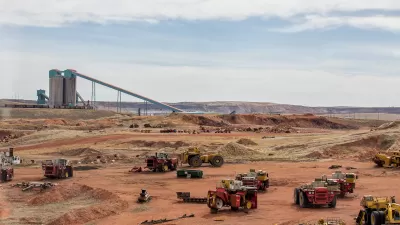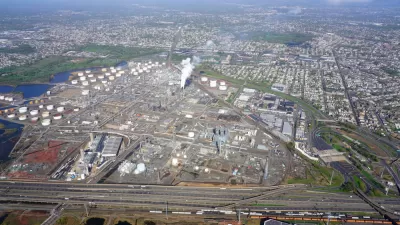With the Trump administration's abdication of its predecessor's position on fighting climate change, a void has been left in global climate change leadership. One expert believes that China may have already filled the leadership role.

"President Trump withdrawing the U.S. from the Paris Climate Accord in 2017 has left many asking who will now lead this work?" states Megan Thompson, host of the PBS NewsHour Weekend, at the beginning of a 4-minute segment on climate change.
It may end up being China, says Barbara Finamore in her new book, 'Will China Save the Planet?' She's an attorney and the founder of the Natural Resources Defense Council's China program...
In response to Thompson's question, "What led to China's turnaround...from being a nation that really resisted the international climate talks to being much more of a leading participant in Paris?" Finamore points to "2013, the year of the so-called Airpocalypse."
Indeed, the horrendous air pollution resulted in a rare moment of freedom of the press. “I’ve never seen such broad Chinese media coverage of air pollution,” Jeremy Goldkorn, a business consultant in Beijing who tracks the Chinese news media, told The New York Times (via Planetizen) in January 2013.
“From People’s Daily to China Central Television, the story is being covered thoroughly, without trying to put a positive spin on it....the apocalyptic skies above the capital this last weekend seemed to have encouraged an even greater enthusiasm for reporting this story," said Goldkorn.
A year later, physicists at UC Berkeley (Berkeley Earth) began measuring global air pollution, releasing their first report in 2015 that found that 4,000 people were dying daily in China due to air pollution.
But it was 2013 that marked the turning point, states Finamore. "That was the year that China became the world's largest investor in renewable energy. And that's the year that China began its historic climate cooperation with the United States." President Obama and President Xi Jinping announced a "U.S.-China Joint Announcement on Climate Change" the following year.
China recognizes that clean energy technology is the leading market opportunity of the 21st century. And just in the past decade it has become the largest user and largest producer and larger investor in renewable energy.
Just to give you an example, by 2020 China will have more solar power, as much as five times the United States, and it has one of every three wind turbines in the world, and it has become the largest market for electric vehicles.
However, China remains by far the world's largest consumer of coal, dependent on it for almost 72 percent of its electricity generation in 2015, though it is projected to drop to 47 percent by 2040, according to the U.S. Energy Information Administration, International Energy Outlook 2017.
Last October's Intergovernmental Panel on Climate Change (IPCC) report "says coal-fired electricity must end by 2050 if we are to limit global warming rises to 1.5C."
FULL STORY: As U.S. cedes leadership on climate, China steps up

Alabama: Trump Terminates Settlements for Black Communities Harmed By Raw Sewage
Trump deemed the landmark civil rights agreement “illegal DEI and environmental justice policy.”

Study: Maui’s Plan to Convert Vacation Rentals to Long-Term Housing Could Cause Nearly $1 Billion Economic Loss
The plan would reduce visitor accommodation by 25% resulting in 1,900 jobs lost.

Planetizen Federal Action Tracker
A weekly monitor of how Trump’s orders and actions are impacting planners and planning in America.

Federal Homelessness Agency Places Entire Staff on Leave
The U.S. Interagency Council on Homelessness is the only federal agency dedicated to preventing and ending homelessness.

Restoring Northern India’s Himalayan ‘Water Temples’
Thousands of centuries-old buildings protect the region’s natural springs and serve as community wells and gathering places.

Milwaukee to Double Bike Share Stations
Bublr Bikes, one of the nation’s most successful, will add 500 new e-bikes to its system.
Urban Design for Planners 1: Software Tools
This six-course series explores essential urban design concepts using open source software and equips planners with the tools they need to participate fully in the urban design process.
Planning for Universal Design
Learn the tools for implementing Universal Design in planning regulations.
Caltrans
Smith Gee Studio
Institute for Housing and Urban Development Studies (IHS)
City of Grandview
Harvard GSD Executive Education
Toledo-Lucas County Plan Commissions
Salt Lake City
NYU Wagner Graduate School of Public Service




























